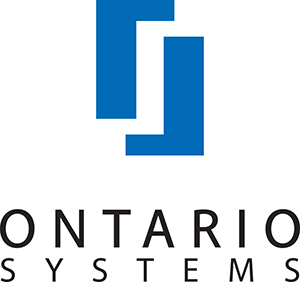Your electronic health record wasn’t built for recovering accounts receivable
Large healthcare networks have invested millions in electronic health record (EHR) systems. Given all the mission-critical capabilities and benefits EHRs provide, it’s reasonable to expect robust ROI in the form of a faster, stronger revenue cycle.
In many respects, EHRs have advanced revenue cycle management light-years. What EHRs aren’t built to do is shift accounts receivable (A/R) recovery into high gear and keep it there.
For much of the healthcare industry — grappling as best it can with an increasingly remote A/R workforce and explosive growth in self-pay balances — the accounts receivable process is riddled with inefficiencies and lost opportunities. Providers struggle to streamline processes and provide patients the consumer-grade experience they expect. Extended days in A/R and an unacceptably high cost to collect are still the norm.
These problems can appear either unsolvable or very costly to address. Attempting to augment an EHR system with patchwork solutions often results in high IT management costs and too little value where it counts.
Fortunately, there is a better way forward that addresses the biggest issues in the healthcare A/R process without hemorrhaging resources. Before we get to that, let’s talk about the things needed for A/R optimization.
Optimizing Accounts Receivable: 7 Potential Gaps in an EHR
To make meaningful strides toward accelerating cash recovery, increasing revenues and lowering the cost to collect, the first step is to understand where the gaps lie so they can be addressed in a suitable, cost-effective way.
1. Workflows that standardize and accelerate A/R
A single aggregated data source offering exception-based automated workflows, uniform processes and real-time organizational insights is essential for A/R optimization. If there are disparate data residing in multiple systems, empowering account representatives to work as one team for each host system eliminates extra steps, reduces errors and improves patient satisfaction.
2. A convenient, friction-free patient experience
When it comes to patient satisfaction, the financial experience is as important as quality of care. The patient’s financial journey should begin with fast, accurate enrollment eligibility screening, with data captured at the point of care to minimize approval delays. Patients should also have access to convenient communication, self-service and payment options so they understand exactly what portion they owe for every encounter and can easily settle their account balances.
3. Real-time visibility into remote rep performance
No matter where representatives are located, team leaders should be able to monitor and track performance metrics such as time on the phone with payers, time spent on hold and accounts worked. A steady stream of real-time performance data enables timely coaching, goal setting, and friendly competition among representatives to drive ongoing improvements and create a more engaged, loyal workforce.
4. Automated decision-making for reps
Deciding which accounts to work, when and how shouldn’t be a representative’s job. But without the benefit of exception-based account routing, there’s no escaping this task. For the sake of efficiency and optimal cash recovery,the system should leverage data to automatically prioritize accounts, route them to specific queues and determine appropriate next steps.
5. Up to 80% less payer IVR/hold time
One of the biggest opportunity costs on the A/R frontline is something most providers are resigned to: The time reps spend navigating payer IVR prompts and waiting on hold. With up to 15 IVR prompts and hold times of 10 to 13 minutes being par for the course, representatives’ capacity for claim follow-up is strictly limited. Concurrent dialing powered by predictive analytics can reduce this idle time by up to 80%.
6. A streamlined, high-value QA program
An effective quality assurance (QA) program is both low cost and meaningful to the representatives it’s designed to help. Team leaders should have the ability to listen in on any call, and calls should be automatically recorded and paired with the associated account records. In addition, QA scorecards should be automatically populated so every call is assigned a score and individual weaknesses and larger trends can be addressed right away.
7. Reps equipped for more productive payer calls
With the right information at their fingertips, representatives can easily follow up on all high-priority claims and adhere to standard operating procedures and governing regulations. Dynamic content that automatically appears on individual dashboards can help ensure no account is neglected and A/R teams consistently comply with employer, payer and government requirements.
Fill the Gaps to Drive Substantial A/R Gains
Hospitals and health systems should be able to get more out of their EHR, recover more revenue faster and lower the cost to collect, even as they grow in the midst of change and unprecedented challenges.
Key to a less costly, more powerful A/R process — and achieving improvements can be accomplished by taking a proactive approach to addressing EHR gaps. In an increasingly complex healthcare environment, providers should leave no stone unturned as they look for ways to streamline and strengthen their operations.






